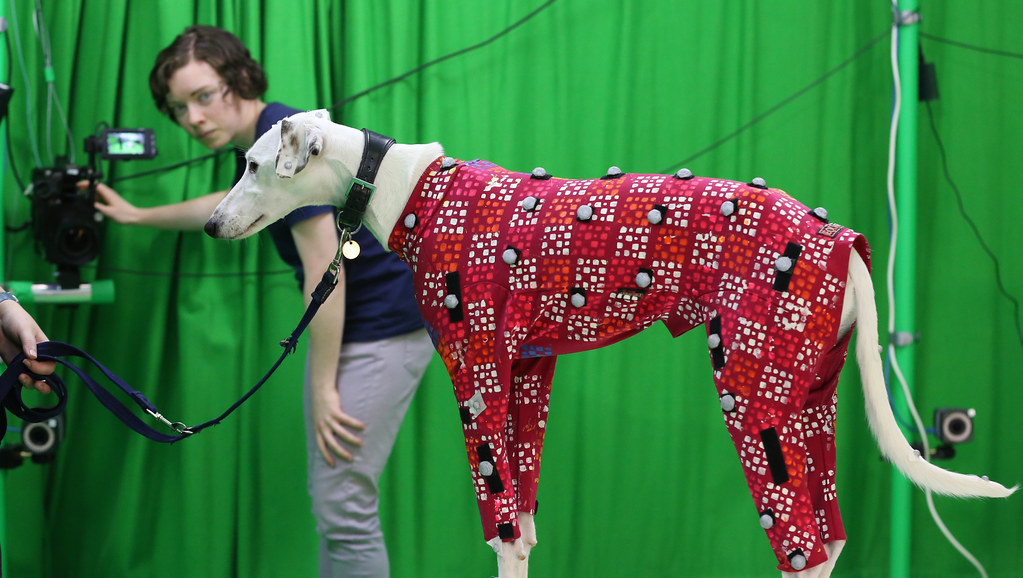Motion capture is the process of recording the movement of objects or people. It records actions of human actors, and uses that information to animate digital character models in 2D or 3D computer animation capture technology. It is widely used in the films or computer games.
However, these technologies require expensive equipment and dozens of markers to be attached.
Computer scientists from CAMERA the University of Bath’s motion capture research centre digitized the movement of fourteen (14) different breeds of dog, from lanky lurchers to squat pugs.
Wearing special doggie motion capture suits with markers, the dogs were filmed under the supervision of their BCDH handlers doing a range of movements as part of their enrichment activities.
The researchers created a computer model that can accurately predict and replicate the poses of dogs when they’re filmed without wearing the motion capture suits. This model allows 3D digital information for new dogs – their shape and movement – to be captured without markers and expensive equipment, but instead using a single RGBD camera.
PhD researcher Sinéad Kearney said: “This is the first time RGBD images have been used to track the motion of dogs using a single camera, which is much more affordable than traditional motion capture systems that require multiple cameras.
She further adds ““For the entertainment industry, our research can help produce more authentic movement of virtual animals in films and video games. Dog owners could also use it to make a 3D digital representation of their pet on their computer, which is a lot of fun!” Watch Sinead Kearney talks about the research
The research was presented at one of the world’s leading AI conferences, the CVPR (Computer Vision and Pattern Recognition) conference on 14 June.
Sources:
Kearney et al (2020) “RGBD-Dog: Predicting Canine Pose from RGBD Sensors” was presented at CVPR.
Digitise your dog into a computer game-Univerisity of Bath (UK)
Note: Content has been edited for style and length.
